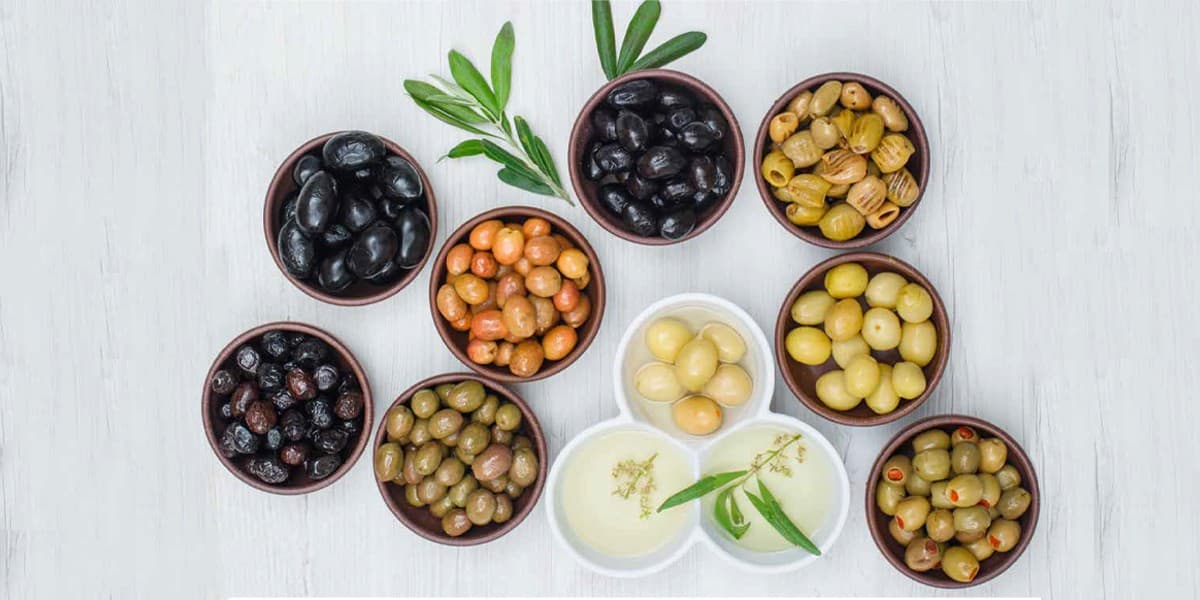
The olive tree, which grows in the Mediterranean climate zone, does not show the same tolerance in terms of climate demands, even if it is not selective in terms of soil requirements.
HEAT:
The most important climatic factor limiting the spread of olives. Olives are generally grown in places with an annual average temperature of 15-20 °C. Olives can withstand high temperatures up to a maximum of 40 °C, provided that they are well watered.
- In the months of May-June, when the temperature rises above the normal (40°C), the leaves become wilted, as the transpiration of the leaves will increase,
- Beaded fruit (parthenocarpic fruit) formation by negatively affecting fertilization during flowering and fruit set period,
- It adversely affects the development and productivity of trees by causing fruit drop, small and wrinkled grains during seed hardening, fruit enlargement and ripening periods.
- The minimum temperature it can withstand is -7 °C. Below this level, damage begins.
- Depending on the severity of the cold, damage is seen starting from the eyes to the root.
These;
. excessive leaf fall
. Shell cracking
. It may occur from time to time as thick branch deaths.
The length of stay of the cold is an important factor affecting the degree of damage. The longer the cold stays, the greater the damage.
PRECIPITATION;
- The annual precipitation demand of olive is 700-800 mm.
- In the regions where olive cultivation is carried out, the rain falling in winter and spring is stored by the soil, meeting the water needs of the olive trees, increasing the flowering and fruit set rate and reducing the June shedding.
- Olive fruit needs water in summer in order for it to be larger and of higher quality, hardening of the core and development of the grain. During this period, the water need that cannot be met by precipitation should be met by irrigation.
- Other precipitation types, namely hail and snow, are undesirable precipitation for olive cultivation. It causes branch breakage. This is more common in trees that are not well pruned.
In case of excessive precipitation;
. There is no version annealing,
. Harvest is difficult,
. It causes the nitrogen fertilizers to be washed away,
. It causes erosion in inclined olive groves,
. It encourages olive trees to shoot more than normal, so the resistance of the trees against cold decreases,
. By raising the ground water, it causes the roots to rot, the aeration of the soil is prevented,
. It lowers the soil pH.
WIND;
Olives are beneficial as well as negative effects in some cases.
What are the benefits,
. The Black Wind blowing in winter brings rain,
. The winds blowing during flowering facilitate fertilization,
. Humid winds blowing in summer prevent trees from losing water by sweating.
What are the negative effects;
. In summer, dry winds blowing from the south miss the soil moisture, and if it blows constantly, the grains become shriveled with thirst.
. Lodos, which blows in winter in regions with open south, awakens trees untimely, causing them to be more affected by the cold.
. It causes branches to break in trees and even to be uprooted from their roots.
HEIGHT and DIRECTION;
Places with an altitude higher than 800 m are not economically suitable for aquaculture. Olive tree loves light. For this reason, southern slopes should be preferred in very cold regions.
SOIL REQUESTS;
Although the olive tree is the "rich tree of poor soils", it is best if the soil structure of the land where olive groves will be established is loamy, clayey-loamy, slightly calcareous and pebbly. Soil depth should be at least 1.5-2 m, rich in organic matter and nutrients, free of salinity problems, good water holding capacity, and pH should be around 6-8. One of the most disliked environments of the olive tree is the height of the ground water. In places where the ground water is closer than 1 m or where the olive roots are under water for more than 3-4 weeks in winter, drainage work should be done before the olive grove is established so that the roots are not damaged by the water.
Olive Plant;
. The preparation of the land is very important in terms of making terraces on lands with steep slopes, making use of rain water and cultivating the land with a tractor.
. Soil analysis must be done
. If there is a ground water problem, it should be solved (drainage)
Planting Shapes;
. Square is applied in fields and small fields whose corners are at right angles. Row spacing and row spacing are equal. It is a generally recommended planting method.
. Rectangular, It is applied in cases where more intermediate agriculture is desired. The rows are narrowed and the rows are kept wide. Care should be taken that the rows are in the North-South direction.
. Triangle, Trees are equidistant from each other. It is applied in large plains and places where intermediate agriculture is not done. With this method, more saplings are planted on the land.
. It is a method applied on lands that are inclined according to the leveling curves as a counter.
